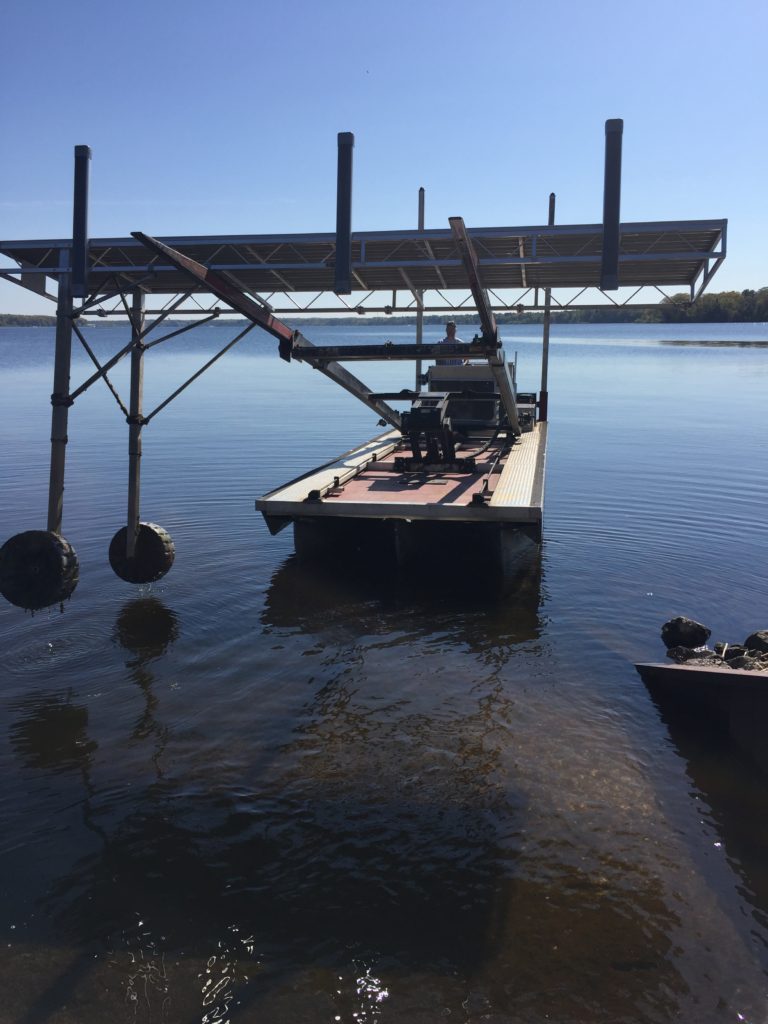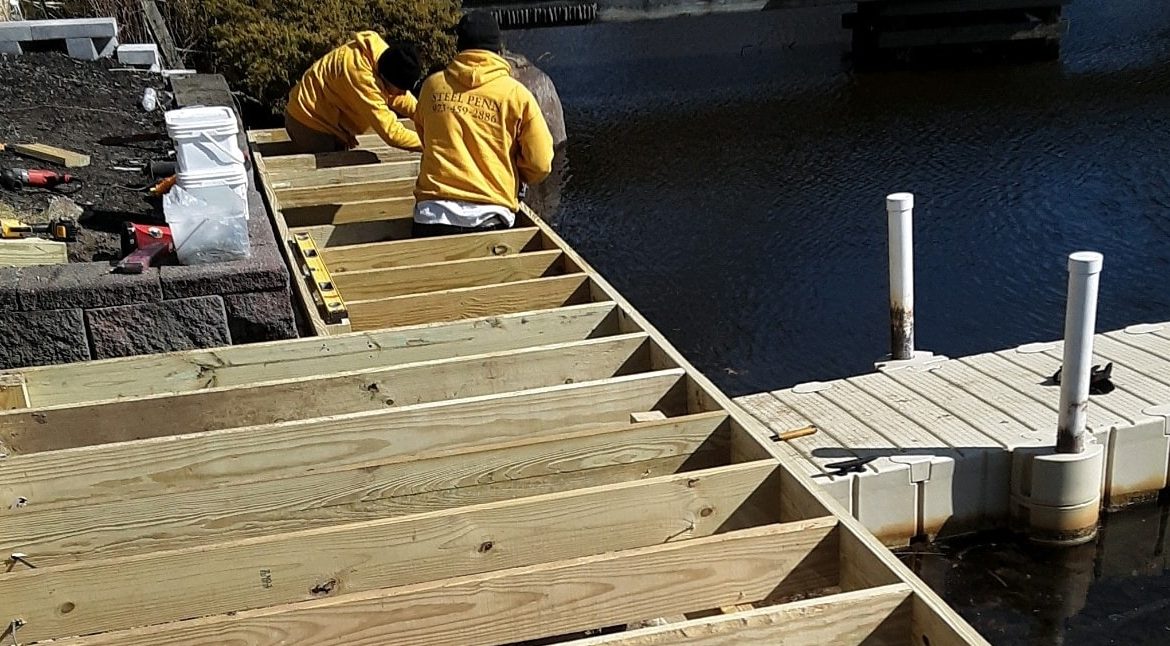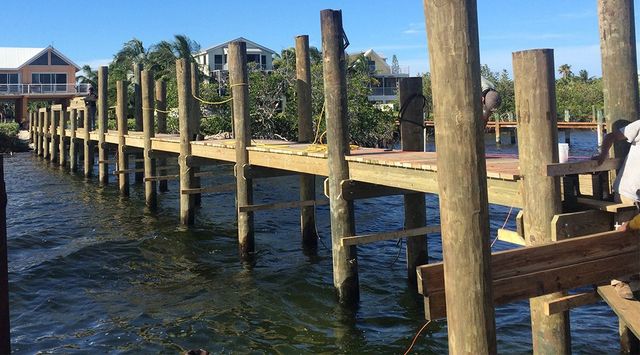How to Choose the Right Solution for Your Dock Repairs
Effective Dock Repair Techniques: Guaranteeing Architectural Stability
Making sure the architectural honesty of anchors via effective repair work techniques is vital for the long life and safety and security of aquatic centers. This entails a multi-faceted technique starting with extensive evaluations using advanced modern technologies like sonar equipment and remotely ran lorries (ROVs) to identify both noticeable and hid problems. Ultimately, picking the appropriate repair materials, such as corrosion-resistant alloys and composite products, is important for resilience. Structural reinforcement methods, including the execution of cross-bracing systems and load-distribution plates, play an essential function in mitigating anxiety factors. The importance of these techniques comes to be noticeable when checking out sophisticated repair work methods and preventative upkeep approaches.
Analyzing Dock Damage
Analyzing dock damage is an essential very first action in guaranteeing the architectural stability and safety and security of any docking center. This initial assessment includes a thorough inspection to identify both concealed and visible problems. Secret aspects to check out include the dock's structure, pilings, outdoor decking, and hardware. Each part must be looked at for indications of wear, rot, rust, or various other types of degradation that could endanger the structural integrity.
Structural designers or certified assessors commonly do these analyses making use of specialized devices and techniques. Underwater inspections could utilize sonar equipment or from another location operated cars (ROVs) to spot submerged damages. Over water, visual evaluations are complemented by using moisture meters and various other diagnostic tools to reveal underlying problems not right away visible to the nude eye.

Deciding On Fixing Products
Selecting the appropriate repair products is a crucial action in the dock repair process, one that directly influences the longevity and efficiency of the fixed framework. Product choice need to be driven by aspects such as environmental conditions, load-bearing requirements, and compatibility with existing dock parts.
In enhancement to wood, composite products are progressively prominent due to their sturdiness and low upkeep needs. Composites, normally made from a mix of plastic and timber fibers, use exceptional resistance to rot, pests, and UV damages. For metal docks, picking corrosion-resistant alloys such as galvanized steel or marine-grade light weight aluminum is important to stop corrosion and guarantee structural honesty in saline water conditions.
Epoxy resins and marine-grade sealers are essential for fixing cracks and sealing joints, giving a waterproof obstacle and boosting the dock's overall stamina. By diligently picking premium materials, dock fixings can attain long-lasting results, consequently guarding against future degradation and guaranteeing risk-free, trusted use.
Structural Reinforcement Methods
Reliable architectural support strategies are crucial in guaranteeing the stability and durability of dock repair services. One basic approach entails making use of steel or composite support bars (rebar) within concrete frameworks. Rebar gives added tensile toughness, protecting against splits and dispersing lots extra equally. This approach is specifically reliable for anchors subjected to hefty tons or extreme environmental conditions.
An additional crucial method is the application of fiber-reinforced polymers (FRP) These materials offer high strength-to-weight proportions and exceptional resistance to rust, making them perfect for enhancing concrete or wooden anchors. FRP can be applied in strips or sheets and adhered with epoxy materials to enhance architectural see this page integrity.
Supporting and anchoring systems also play a crucial duty in structural support. Cross-bracing, utilizing steel or wooden light beams, can combat side forces, reducing guiding and movement. Securing systems, such as helical piers or driven piles, give a steady structure by transferring lots to deeper, extra steady dirt layers.
Finally, the assimilation of load-distribution plates can help disperse weight more equally across the dock's surface, mitigating localized stress and anxiety points. These strategies collectively make certain that docks stay durable and safe, capable of holding up against the rigors of their operational setting.
Advanced Repair Techniques

An additional innovative strategy involves underwater welding, which allows for repair work to be carried out without the need to dewater the area. This method is particularly beneficial for attending to architectural problems in submerged dock components, ensuring marginal disturbance to procedures. Boosted welding techniques, paired with robot systems, provide precision and reliability, thereby expanding the life-span of the dock.
Furthermore, cathodic protection systems are implemented to avoid deterioration in metal dock structures. By using sacrificial anodes or satisfied existing systems, these methods effectively minimize the electrochemical procedures that cause material deterioration.
Last but not least, advanced monitoring innovations, such as structural wellness tracking (SHM) systems, offer real-time information on the problem of dock structures. These systems make it possible for positive maintenance and this page prompt interventions, inevitably making sure the long-term architectural stability of the dock.
Upkeep and Prevention
Upkeep and prevention are basic concepts that underpin the long life and security of dock frameworks. Regular examinations are paramount, allowing for very early detection of deterioration, possible weaknesses, and ecological impacts. A positive approach, including regular look for corrosion, rot, and architectural changes, reduces expensive fixings and prolongs the dock's functional life.
Preventative steps must consist of applying protective layers to metal elements to defend against rust and utilizing cured timber to resist decay. Furthermore, making sure correct drainage and ventilation can avoid water build-up, which is an usual root cause of architectural degradation. Incorporating high quality materials and sticking to supplier standards throughout building and construction and repair phases also play important functions in improving longevity.

Training personnel in dock upkeep ideal methods guarantees consistent application of preventative procedures. Leveraging technological advancements, such as drones for inspections and sensing units for real-time tracking, can even more enhance upkeep efforts. By prioritizing upkeep and prevention, dock owners can make certain structural integrity, functional security, and affordable management over the dock's life-span.
Final Thought
In conclusion, preserving the architectural integrity of marine centers demands extensive dock repair service strategies. Advanced repair techniques, combined with normal upkeep techniques, ensure the dock remains functional and safe under diverse environmental conditions.
Guaranteeing the structural stability of anchors via reliable repair techniques is critical for the durability and security of marine facilities.Choosing the suitable repair work materials is a critical step in the dock remediation process, one that directly influences the longevity and performance of the repaired structure.Effective architectural support methods are important in making certain the security and durability of dock repair work. By prioritizing maintenance and avoidance, dock proprietors can make sure structural integrity, functional safety and security, and economical administration over the dock's lifespan.
In conclusion, keeping the architectural stability of marine centers requires detailed dock repair pop over to these guys work techniques.